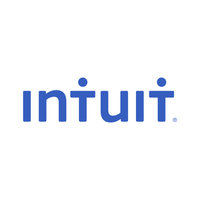
Intuit Inc
NASDAQ:INTU


| US |

|
Johnson & Johnson
NYSE:JNJ
|
Pharmaceuticals
|
| US |

|
Berkshire Hathaway Inc
NYSE:BRK.A
|
Financial Services
|
| US |

|
Bank of America Corp
NYSE:BAC
|
Banking
|
| US |

|
Mastercard Inc
NYSE:MA
|
Technology
|
| US |

|
UnitedHealth Group Inc
NYSE:UNH
|
Health Care
|
| US |

|
Exxon Mobil Corp
NYSE:XOM
|
Energy
|
| US |

|
Pfizer Inc
NYSE:PFE
|
Pharmaceuticals
|
| US |

|
Palantir Technologies Inc
NYSE:PLTR
|
Technology
|
| US |

|
Nike Inc
NYSE:NKE
|
Textiles, Apparel & Luxury Goods
|
| US |

|
Visa Inc
NYSE:V
|
Technology
|
| CN |

|
Alibaba Group Holding Ltd
NYSE:BABA
|
Retail
|
| US |

|
3M Co
NYSE:MMM
|
Industrial Conglomerates
|
| US |

|
JPMorgan Chase & Co
NYSE:JPM
|
Banking
|
| US |

|
Coca-Cola Co
NYSE:KO
|
Beverages
|
| US |

|
Walmart Inc
NYSE:WMT
|
Retail
|
| US |

|
Verizon Communications Inc
NYSE:VZ
|
Telecommunication
|
Utilize notes to systematically review your investment decisions. By reflecting on past outcomes, you can discern effective strategies and identify those that underperformed. This continuous feedback loop enables you to adapt and refine your approach, optimizing for future success.
Each note serves as a learning point, offering insights into your decision-making processes. Over time, you'll accumulate a personalized database of knowledge, enhancing your ability to make informed decisions quickly and effectively.
With a comprehensive record of your investment history at your fingertips, you can compare current opportunities against past experiences. This not only bolsters your confidence but also ensures that each decision is grounded in a well-documented rationale.
Do you really want to delete this note?
This action cannot be undone.

| 52 Week Range |
561.2504
706.25
|
| Price Target |
|
We'll email you a reminder when the closing price reaches USD.
Choose the stock you wish to monitor with a price alert.

|
Johnson & Johnson
NYSE:JNJ
|
US |

|
Berkshire Hathaway Inc
NYSE:BRK.A
|
US |

|
Bank of America Corp
NYSE:BAC
|
US |

|
Mastercard Inc
NYSE:MA
|
US |

|
UnitedHealth Group Inc
NYSE:UNH
|
US |

|
Exxon Mobil Corp
NYSE:XOM
|
US |

|
Pfizer Inc
NYSE:PFE
|
US |

|
Palantir Technologies Inc
NYSE:PLTR
|
US |

|
Nike Inc
NYSE:NKE
|
US |

|
Visa Inc
NYSE:V
|
US |

|
Alibaba Group Holding Ltd
NYSE:BABA
|
CN |

|
3M Co
NYSE:MMM
|
US |

|
JPMorgan Chase & Co
NYSE:JPM
|
US |

|
Coca-Cola Co
NYSE:KO
|
US |

|
Walmart Inc
NYSE:WMT
|
US |

|
Verizon Communications Inc
NYSE:VZ
|
US |
This alert will be permanently deleted.
 Intuit Inc
Intuit Inc
Intuit Inc





Intuit Inc., a powerhouse in financial software, has evolved from its humble beginnings in the mid-1980s, when Scott Cook and Tom Proulx envisioned a seamless way for individuals to manage personal finances. The cornerstone of their vision was Quicken, a groundbreaking product that simplified checkbook balancing and financial tracking, swiftly gaining a loyal customer base. This inspired Intuit to expand its software offerings, delving into the complexities of tax preparation and small business management. TurboTax emerged as a dominant force in the tax software arena, revolutionizing how consumers and small businesses navigate the labyrinth of tax codes. QuickBooks soon followed, providing an indispensable tool for small businesses to streamline their accounting processes, manage payroll, and handle invoices with minimal effort.
Today, Intuit earns its robust revenues by employing a subscription-based model for these flagship products, combining user-friendly interfaces with sophisticated, cloud-driven analytics that offer unparalleled financial insights. The company has deftly embraced the digital age by leveraging cloud technology, artificial intelligence, and machine learning to offer tailored solutions, thus driving customer loyalty through continuous innovation. By bundling these services and expanding through strategic acquisitions—such as Mint, a personal finance app, and Credit Karma, a credit and financial management platform—Intuit continues to diversify its portfolio and reinforce its position in the financial technology landscape. Through a mix of direct-to-consumer sales and partnerships with financial institutions, Intuit sustains its formidable presence, addressing the financial needs of millions across the globe.

Intuit Inc., a powerhouse in financial software, has evolved from its humble beginnings in the mid-1980s, when Scott Cook and Tom Proulx envisioned a seamless way for individuals to manage personal finances. The cornerstone of their vision was Quicken, a groundbreaking product that simplified checkbook balancing and financial tracking, swiftly gaining a loyal customer base. This inspired Intuit to expand its software offerings, delving into the complexities of tax preparation and small business management. TurboTax emerged as a dominant force in the tax software arena, revolutionizing how consumers and small businesses navigate the labyrinth of tax codes. QuickBooks soon followed, providing an indispensable tool for small businesses to streamline their accounting processes, manage payroll, and handle invoices with minimal effort.
Today, Intuit earns its robust revenues by employing a subscription-based model for these flagship products, combining user-friendly interfaces with sophisticated, cloud-driven analytics that offer unparalleled financial insights. The company has deftly embraced the digital age by leveraging cloud technology, artificial intelligence, and machine learning to offer tailored solutions, thus driving customer loyalty through continuous innovation. By bundling these services and expanding through strategic acquisitions—such as Mint, a personal finance app, and Credit Karma, a credit and financial management platform—Intuit continues to diversify its portfolio and reinforce its position in the financial technology landscape. Through a mix of direct-to-consumer sales and partnerships with financial institutions, Intuit sustains its formidable presence, addressing the financial needs of millions across the globe.
Earnings Calls
Management

Sasan K. Goodarzi is the Chief Executive Officer of Intuit Inc., a global technology platform that develops financial and business management solutions such as TurboTax, QuickBooks, Mint, and Credit Karma. Goodarzi joined Intuit in 2004 and has held several key positions within the company, contributing significantly to its growth and transformation. Before becoming CEO, he served in roles such as Executive Vice President and General Manager of Intuit's Small Business and Self-Employed Group, where he focused on expanding the QuickBooks ecosystem and driving the growth of small business offerings. His leadership was pivotal in advancing the company's shift to a cloud-based platform, aiding customers in improving their financial lives. Goodarzi's career includes leadership positions outside of Intuit as well. Before joining Intuit, he held roles at companies like Invensys, an industrial automation company, where he served as Senior Vice President of Products and Marketing, and he also held general management roles at Honeywell. Goodarzi earned a Bachelor of Science degree in Electrical Engineering from the University of California, Santa Barbara, and later attained a Master of Business Administration from the Kellogg School of Management at Northwestern University. Known for his strategic vision and commitment to innovation, he continues to emphasize customer-centric approaches and data-driven decision-making at Intuit.

Before becoming CEO, he served in roles such as Executive Vice President and General Manager of Intuit's Small Business and Self-Employed Group, where he focused on expanding the QuickBooks ecosystem and driving the growth of small business offerings. His leadership was pivotal in advancing the company's shift to a cloud-based platform, aiding customers in improving their financial lives.
Goodarzi's career includes leadership positions outside of Intuit as well. Before joining Intuit, he held roles at companies like Invensys, an industrial automation company, where he served as Senior Vice President of Products and Marketing, and he also held general management roles at Honeywell.
Goodarzi earned a Bachelor of Science degree in Electrical Engineering from the University of California, Santa Barbara, and later attained a Master of Business Administration from the Kellogg School of Management at Northwestern University. Known for his strategic vision and commitment to innovation, he continues to emphasize customer-centric approaches and data-driven decision-making at Intuit.

Scott D. Cook is a renowned American entrepreneur and businessman, best known as the co-founder of Intuit Inc., a leading software company that specializes in financial and business management solutions. Born on February 4, 1952, Scott Cook graduated from the University of Southern California with a degree in economics and mathematics before earning an MBA from Harvard Business School. Before founding Intuit, Cook worked at Procter & Gamble, where he gained valuable experience in brand management, and at Bain & Company as a consultant. The idea for Intuit came about in the early 1980s when Cook noticed his wife struggling to balance their checkbook manually. He envisioned a simpler, software-based solution for personal finance management, leading to the development of Quicken, Intuit's flagship product. Cook co-founded Intuit in 1983 with programmer Tom Proulx, and under his strategic leadership, the company expanded its product line to include TurboTax, QuickBooks, and other popular financial software products, catering to both individuals and businesses. His innovation and customer-focused approach helped revolutionize the way people handle finances. Scott Cook served as Intuit’s CEO until 1994 and has remained actively involved with the company as a board member. Beyond Intuit, he has contributed to the technology and business communities as a board member of various organizations, including eBay and Procter & Gamble. Cook is also a part of initiatives at the Harvard Business School and other educational institutions. His work has been recognized with numerous accolades, underscoring his influence in transforming financial management through technology and innovation. Cook’s entrepreneurial journey and leadership at Intuit have solidified his status as a prominent figure in the tech industry.

Before founding Intuit, Cook worked at Procter & Gamble, where he gained valuable experience in brand management, and at Bain & Company as a consultant. The idea for Intuit came about in the early 1980s when Cook noticed his wife struggling to balance their checkbook manually. He envisioned a simpler, software-based solution for personal finance management, leading to the development of Quicken, Intuit's flagship product.
Cook co-founded Intuit in 1983 with programmer Tom Proulx, and under his strategic leadership, the company expanded its product line to include TurboTax, QuickBooks, and other popular financial software products, catering to both individuals and businesses. His innovation and customer-focused approach helped revolutionize the way people handle finances.
Scott Cook served as Intuit’s CEO until 1994 and has remained actively involved with the company as a board member. Beyond Intuit, he has contributed to the technology and business communities as a board member of various organizations, including eBay and Procter & Gamble. Cook is also a part of initiatives at the Harvard Business School and other educational institutions.
His work has been recognized with numerous accolades, underscoring his influence in transforming financial management through technology and innovation. Cook’s entrepreneurial journey and leadership at Intuit have solidified his status as a prominent figure in the tech industry.

Laura A. Fennell is a notable executive who has been associated with Intuit Inc., a financial software company known for products like TurboTax and QuickBooks. At Intuit, she held the position of Executive Vice President, Chief People and Places Officer, where she played a critical role in overseeing the company's human resources and workplace environments. Fennell's responsibilities have included talent recruitment, employee development, and cultivating a positive workplace culture, crucial elements that support Intuit's business objectives and innovation. Before joining Intuit, Laura Fennell garnered extensive experience in legal and human resource leadership. Her legal expertise came from her tenure as a partner at the law firm Fenwick & West LLP, where she specialized in securities law, mergers and acquisitions, and working with technology companies. Laura Fennell is recognized for her leadership style that emphasizes inclusivity, employee engagement, and fostering an environment that encourages diversity and innovation. Her contributions to Intuit and her extended experience in law and HR have made her a respected figure in the corporate sector.

Before joining Intuit, Laura Fennell garnered extensive experience in legal and human resource leadership. Her legal expertise came from her tenure as a partner at the law firm Fenwick & West LLP, where she specialized in securities law, mergers and acquisitions, and working with technology companies.
Laura Fennell is recognized for her leadership style that emphasizes inclusivity, employee engagement, and fostering an environment that encourages diversity and innovation. Her contributions to Intuit and her extended experience in law and HR have made her a respected figure in the corporate sector.

Marianna Tessel is a prominent technology executive known for her role as the Chief Technology Officer (CTO) at Intuit Inc., a leading software company renowned for its financial and business management solutions, including TurboTax, QuickBooks, and Mint. Tessel joined Intuit in 2017, initially serving as Chief Product Development Officer, before being appointed as CTO in 2019. Before her tenure at Intuit, Tessel had an impressive career spanning several well-respected technology companies. She served as an engineering executive at PayPal, contributing to the company's product and technology development. Prior to PayPal, Tessel held various leadership positions at VMware, where she played a significant role in driving the infrastructure and cloud management aspects of the company. Her experience also includes executive roles at Docker, an open platform for distributed applications, where she focused on engineering and development efforts. Originally from Israel, Marianna Tessel began her career as a software engineer in the Israeli military, where she gained valuable experience that propelled her future in technology leadership roles. She holds a Bachelor of Science degree in Computer Engineering from Technion - Israel Institute of Technology. Tessel is widely admired for her expertise in guiding teams through technological innovation and transformation, leveraging her technical skills and leadership acumen to help organizations meet their strategic goals. Her work at Intuit has been instrumental in accelerating the company's cloud-based technology efforts, enhancing user experience and product development across its suite of financial tools.

Before her tenure at Intuit, Tessel had an impressive career spanning several well-respected technology companies. She served as an engineering executive at PayPal, contributing to the company's product and technology development. Prior to PayPal, Tessel held various leadership positions at VMware, where she played a significant role in driving the infrastructure and cloud management aspects of the company. Her experience also includes executive roles at Docker, an open platform for distributed applications, where she focused on engineering and development efforts.
Originally from Israel, Marianna Tessel began her career as a software engineer in the Israeli military, where she gained valuable experience that propelled her future in technology leadership roles. She holds a Bachelor of Science degree in Computer Engineering from Technion - Israel Institute of Technology.
Tessel is widely admired for her expertise in guiding teams through technological innovation and transformation, leveraging her technical skills and leadership acumen to help organizations meet their strategic goals. Her work at Intuit has been instrumental in accelerating the company's cloud-based technology efforts, enhancing user experience and product development across its suite of financial tools.

Sandeep Singh Aujla is an accomplished executive known for his tenure at Intuit Inc., where he has held significant leadership roles. He has made notable contributions to the company, particularly in areas that bridge technology and business strategy. Aujla's expertise spans over two decades and includes a diverse range of leadership positions in finance, strategy, and operations across various prominent technology firms. At Intuit, Sandeep has been instrumental in driving strategic initiatives that align with the company’s mission to power prosperity for customers and clients. His leadership style is characterized by a strong emphasis on innovation, team building, and operational efficiency, all critical components in thriving within the dynamic tech industry. Sandeep Singh Aujla's educational background, characterized by a solid foundation in business administration and strategic management, has played a crucial role in his professional journey. His career reflects a dedication to leveraging technology to create significant value, underpinned by a keen understanding of the evolving market landscape and customer needs. Beyond his professional life, Aujla is recognized for his commitment to fostering an inclusive and equitable workplace culture, advocating for diversity and talent development within his teams. His contributions to Intuit Inc. and the broader tech community underscore his impact as a forward-thinking leader in the industry.

At Intuit, Sandeep has been instrumental in driving strategic initiatives that align with the company’s mission to power prosperity for customers and clients. His leadership style is characterized by a strong emphasis on innovation, team building, and operational efficiency, all critical components in thriving within the dynamic tech industry.
Sandeep Singh Aujla's educational background, characterized by a solid foundation in business administration and strategic management, has played a crucial role in his professional journey. His career reflects a dedication to leveraging technology to create significant value, underpinned by a keen understanding of the evolving market landscape and customer needs.
Beyond his professional life, Aujla is recognized for his commitment to fostering an inclusive and equitable workplace culture, advocating for diversity and talent development within his teams. His contributions to Intuit Inc. and the broader tech community underscore his impact as a forward-thinking leader in the industry.

Lauren D. Hotz serves as the Executive Vice President and General Counsel at Intuit Inc. She plays a pivotal role in overseeing the company's legal affairs, corporate counsel, and compliance matters, providing strategic legal guidance to support Intuit’s operations, innovation, and growth goals. With a wealth of experience in corporate law and governance, Hotz is instrumental in navigating the complex legal landscape of the technology industry. Her leadership ensures that Intuit adheres to regulatory requirements while fostering a culture of ethical business practices. Prior to her current role, she held significant legal positions in other leading corporations, bringing a comprehensive perspective to her work at Intuit.


Alex G. Balazs is a prominent technology executive known for his role at Intuit Inc., a leading financial software company. As of now, he serves as the Chief Technology Officer (CTO) at Intuit. In this position, Balazs is responsible for setting the company's technical vision and leading the global engineering team to drive innovation and development for Intuit's suite of products, which include TurboTax, QuickBooks, and Mint. Balazs has been with Intuit for several years, contributing significantly to the company's growth and technological advancements. His leadership focuses on leveraging emerging technologies such as artificial intelligence, machine learning, and cloud computing to enhance customer experiences and streamline operations. Before becoming CTO, Alex held various leadership roles within Intuit, where he played a crucial part in advancing the company's digital transformation initiatives. His career at Intuit has been marked by a commitment to fostering a culture of innovation and maintaining the company's position as a leader in the fintech industry. Throughout his career, Balazs has been recognized for his expertise in software development and his strategic vision in harnessing technology to deliver robust financial solutions. His work ensures that Intuit remains at the forefront of technological advancements, meeting the evolving needs of individuals and small businesses worldwide.

Balazs has been with Intuit for several years, contributing significantly to the company's growth and technological advancements. His leadership focuses on leveraging emerging technologies such as artificial intelligence, machine learning, and cloud computing to enhance customer experiences and streamline operations.
Before becoming CTO, Alex held various leadership roles within Intuit, where he played a crucial part in advancing the company's digital transformation initiatives. His career at Intuit has been marked by a commitment to fostering a culture of innovation and maintaining the company's position as a leader in the fintech industry.
Throughout his career, Balazs has been recognized for his expertise in software development and his strategic vision in harnessing technology to deliver robust financial solutions. His work ensures that Intuit remains at the forefront of technological advancements, meeting the evolving needs of individuals and small businesses worldwide.


Kerry J. McLean J.D. is the Executive Vice President, General Counsel, and Corporate Secretary at Intuit Inc. In her role, she oversees all of Intuit's legal and corporate affairs, including compliance, public policy, and corporate governance. She plays a crucial part in advising the company on legal matters that impact the business and its operations worldwide. Kerry holds a Juris Doctor degree, bringing extensive legal expertise to her position at Intuit. Throughout her career, she has been recognized for her adept handling of complex legal issues and her strategic insight into corporate governance. Before joining Intuit, she amassed significant experience working in both legal and leadership roles at other reputable organizations. Her work emphasizes not only legal compliance but also ethical business practices and the fostering of a diverse and inclusive corporate environment. Kerry McLean is also known for her advocacy in matters of diversity and inclusion within the workplace, contributing to Intuit's initiatives to build a more inclusive culture. Her leadership extends beyond the legal domain, impacting significantly on the overall corporate strategy of Intuit.

Kerry holds a Juris Doctor degree, bringing extensive legal expertise to her position at Intuit. Throughout her career, she has been recognized for her adept handling of complex legal issues and her strategic insight into corporate governance. Before joining Intuit, she amassed significant experience working in both legal and leadership roles at other reputable organizations. Her work emphasizes not only legal compliance but also ethical business practices and the fostering of a diverse and inclusive corporate environment.
Kerry McLean is also known for her advocacy in matters of diversity and inclusion within the workplace, contributing to Intuit's initiatives to build a more inclusive culture. Her leadership extends beyond the legal domain, impacting significantly on the overall corporate strategy of Intuit.

Ms. Shveta Mujumdar is a notable executive at Intuit Inc., where she holds the position of Vice President, Corporate Controller, and Chief Accounting Officer. In her role, she is responsible for overseeing the company’s accounting operations, financial reporting, and compliance functions. Shveta brings extensive expertise in financial management and accounting to Intuit, having previously held various senior leadership positions in finance and accounting at reputable firms. She is known for her strategic leadership, dedication to enhancing financial processes, and commitment to ensuring the accuracy and integrity of financial information. Shveta is regarded as a key member of Intuit's financial leadership team, contributing significantly to the company’s financial health and strategic growth initiatives.































 You don't have any saved screeners yet
You don't have any saved screeners yet
